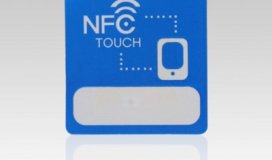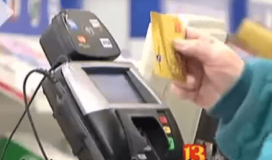Animal technology company GrowSafe Systems has been providing its feed lot customers with radio frequency identification solutions to track cattle health and behavior for the past four years. More recently, the company has been working on monitoring grazing cattle. With this information, farmers and producers have been monitoring not only where each animal is located, but also—by pairing a cow's ID number with its sensor data—how that animal is acting and feeling.
In that way, farmers can better predict when a particular animal may be ill, as well as which cattle are thriving and which genetic factors make them thrive. Now, says Alison Sunstrum, GrowSafe's co-CEO, the company is moving beyond the capturing and analyzing of data to providing treatment to specific animals, based on the collected RFID- and sensor-based data.
GrowSafe has spent several decades researching and testing how RFID can be used to identify livestock. The Alberta company began its RFID foray with ostrich chicks. Because the birds were highly valued and very sensitive (only about 12 percent reach maturity), the firm began tracking the birds in the 1990s via 125 kHZ low-frequency (LF) RFID-enabled leg bands, to track how long they remained at the feeding trough and how much they ate during each visit. That information enabled ostrich farmers to better identify which birds were at risk, and their survivability improved with resulting treatment.
GrowSafe's system has since been expanded to livestock, most commonly cattle. The company offers systems that measure feed and water consumption, which resemble typical steel farm equipment but, in fact, have RFID antennas and reading technology built into them, along with sensors that weigh animals, or their feed, water and environment. That sensor data, paired with each animal's ID, enables GrowSafe to provide farmers and producers with information regarding every animal and its behavior.
But merely collecting the data is not enough to improve operations, Sunstrum notes, and GrowSafe has been focusing on how the RFID and sensor data can be filtered and analyzed. GrowSafe's integrated hardware and software, in fact, captures the data, analyzes any changes in animal behavior or weight, and is designed to display alerts if such changes take place.
Now, the company is taking another step toward that effort by automating some responses made with regard to animals' status, such as providing minerals or vitamins or dispersing a variety of medications based on the sensor information. The solution can also automatically spray-paint the back of a cow as it is feeding or drinking, if the system identifies that it requires additional help, thereby making it easier for the feed lot health crew to visually identify that animal.
GrowSafe recommends LF half-duplex ear tags to its customers, or a customer can acquire its own tags. The company has tested all types of RFID frequencies, Sunstrum says, and has settled on LF half-duplex tags due to their short-range transmission, which ensures that a tag will be read only when the animal to which it is attached is actually in the unit where sensor data is being collected. In addition, she says, the firm determined that LF tags could be read reliably in the presence of metal, dirt and water.
"If a transponder will read at a 12-inch distance from the antenna through air," Sunstrum says, "it will also read at this distance when there is flesh, mud, glass, water or any other non-metallic object in between." GrowSafe built its own systems that combine its hardware, sensors and software, as well as a local data-acquisition computer
Typically, an animal goes to a feed or water trough, where measurement hardware has been positioned. The sensors on the feed trough can measure changes at a resolution of 10 grams (0.4 ounce), so they can identify how much feed is leaving the trough as a cow is standing there. Load sensors affixed around the water trough can measure the weight of the animal itself as it drinks.
When the units read a tag, that tag's ID number and accumulated animal environmental and other sensor data is forwarded to a gateway via the best transmission method onboard, such as a Wi-Fi, cellular or satellite connection. The units form a mesh network; the data can be sent directly to a computer gateway located as far as 60 miles away, or by piggyback even further. The data processing and analytic software runs both on a local server dedicated to a customer site, as well as on GrowSafe's own hosted server.
More info visit rfidjournal.com



